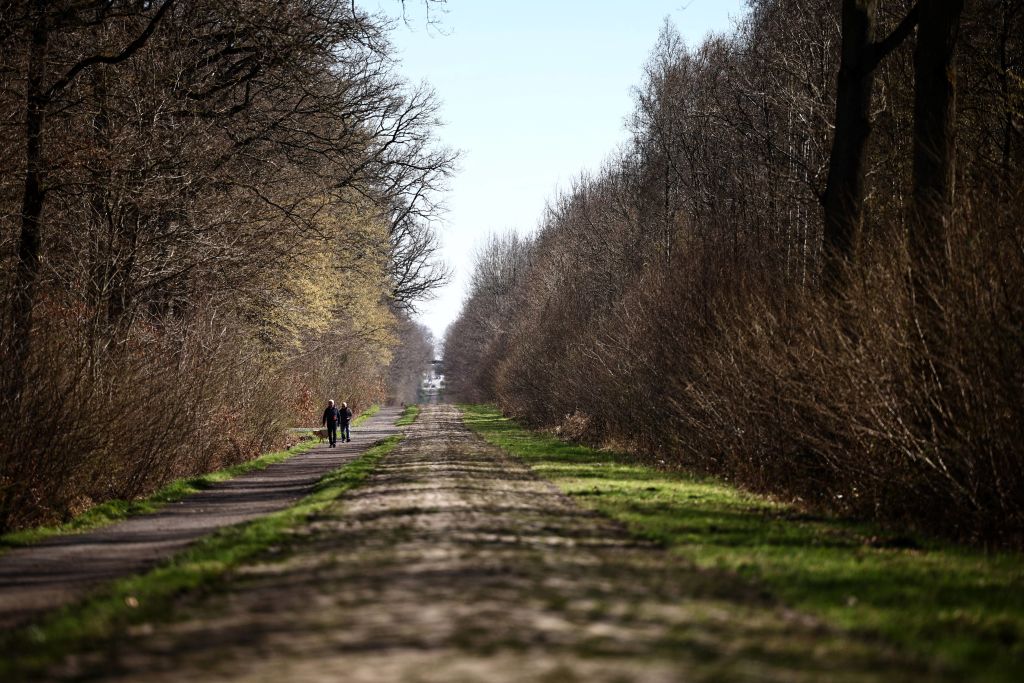
Organisers of Paris-Roubaix performed their traditional inspection of the 29 cobblestone sectors of the upcoming weekend's women's and men's races and declared each stretch of pavé as acceptable for a bike race as such surfaces can get.
Race director Thierry Gouvenou gave his summary of the inspection to Sporza after giving the pavé sectors a once-over.
"This morning, we have seen that they are wet here and there, with some mud," Gouvenou said. Although there is a chance of showers in the days preceding the race, the weekend forecast is looking clear and dry.
Gouvenou said that in the case of rain, the organisers would ask the local municipalities to help tidy the cobbles before Saturday's Women's WorldTour Paris-Roubaix Femmes and the next day's men's Monument.
"Everything should be fine by Sunday. Beautiful weather is forecast, as so often during Paris-Roubaix. Rain rarely falls. And that will also be the case this weekend."
The traditional three five-star sectors continue to be ranked as the hardest classification this year: sector 19 of 29, the 2,300 metre-long Trouée d'Arenberg with 95.3km to go, is the first. Then comes the 3km long Mons-en-Pévèle section with 48.6km remaining.
The Arenberg Forest sector received a manicure from a herd of goats earlier this year as a more eco-friendly way of controlling the moss and weeds.
The men hit the first of 29 pavé sectors in Troisvilles, with a 2.2km stretch to Inchy and over 161km still to race. Most of the first 10 sectors are rated three stars out of five in difficulty, with the third sector, the 3.7km long Quiévy to Saint-Python (sector 27 in the traditional descending order), rated four of five.
The two courses overlap, beginning with the Hornaing to Wandignies sector (number 17). At 3.4km in length, it earns four stars for both fields.
For the men, the Trouée d'Arenberg is the first five-star sector, while Mons-en-Pévèle is the first of two five-star sectors for the women's race at number 11 of 17 and the second for men (also number 11).
In both races, the most critical point comes in sections 7 through 4, especially the famed Camphin-en-Pévèle (sector 5, four stars) and the last five-star sector at the Carrefour de l'Arbre with just 17.2km to go.
When dry, as is likely to be the case this year, the cobble sectors can be dusty and slippery, but when wet, they become even more treacherous.
The last wet edition of Paris-Roubaix came in 2021 when organisers shifted the race to October amid the COVID-19 pandemic. The treacherous conditions saw numerous riders crash and Lizzie Deignan (Trek-Segafredo) launching a race-winning move if only out of self-preservation, ahead of the first cobble sector.
The men's race was equally chaotic, with Gianni Moscon looking like he would solo to the win before a puncture and crash took him out of contention, and Sonny Colbrelli prevailed in the resulting three-man sprint over Florian Vermeersch and Mathieu van der Poel.
In 2022, the short time between editions meant the cobbles were in unusually good condition without having a full year for the farm roads to get buried in mud.
The fine conditions led to the fastest edition of Paris-Roubaix, with Dylan van Baarle's 45.8kph average on April 17, 2022 setting the record for men.







